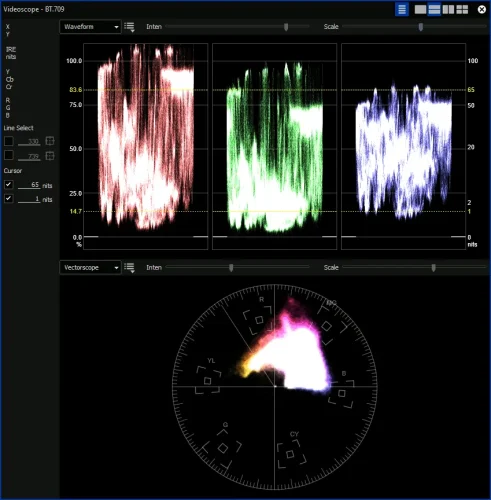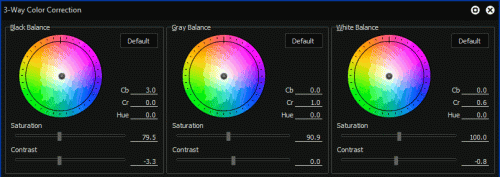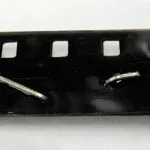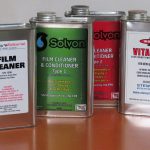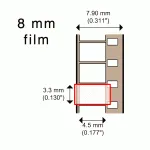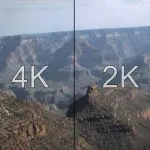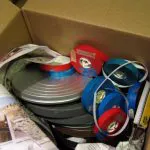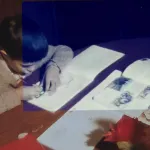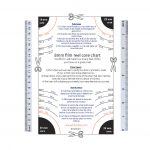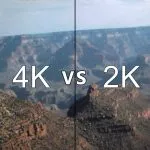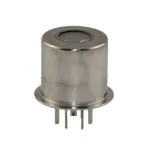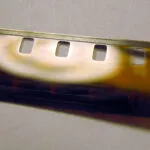The 80/20 Rule Applied to Color Grading
How best to structure our color grading services here at FilmFix has presented us with a challenging dilemma. On the one hand, all 8mm film benefits from some color grading, so that the transfer will look more natural on your TV. On the other hand, the sticker shock for "Hollywood-Treatment" (referred to as the 'Swiss-finish') color grading option can be prohibitive for some of our customers. Color grading is — always and unconditionally — laborious. For the sake of our customers, we had to find a way to make it more affordable in the smartest way possible. This is where the 80/20 Rule came to the rescue.
Before I get into the 80/20 Rule and how we applied it to reducing the cost of color grading for you, I need to elaborate a bit on what is required to color grade 8mm film, and why it normally costs so much. By way of example — without showing you the film's image — I have reproduced below a screen capture showing how a strongly discolored film displays in a videoscope. (The videoscope — waveform and vectorscope — is the tool that I use to inspect the image upon which I am working.) This particular clip had a strong magenta discoloration.
I do not need to explain here how I interpret this information. Just notice that the red waveform on the top left is much taller than the blue waveform on the top right. In comparison, the videoscope image below shows that same video clip after I have applied color grading to it:
Notice how, in all three of the color waveforms, the high points and the low points are now relatively even, with adequate margins separating them from both the 0-mark and the 100-mark. These margins prevent your MP4 image information from being “clipped” by your TV, thereby preserving image detail in both shadows and highlights.
In order to obtain the above corrections, I had to apply 3 adjustment filters to the image, using the following 2 color grading tools:
- "3-Way Color-Correction" tool (2 passes)
- "YUV Curve" tool (1 pass)
Here, briefly, is how these three adjustments worked (in this example) to improve the transfer result:
- First pass with the "3-Way Color-Correction" tool:
This first set of adjustments neutralized the film’s magenta shift by adding green into the gray balance. In this example, I also adjusted the red component of the gray balance toward a more natural-looking red hue.
![]() MP4 is an 8-bit file. Fewer available colors cause “banding”, as opposed to a smooth gradient.
MP4 is an 8-bit file. Fewer available colors cause “banding”, as opposed to a smooth gradient. - The "YUV Curve" tool: This set of adjustments lowered the contrast (Y) into a more TV-friendly range, while adding a bit more color saturation (U and V).
- Second pass with the "3-Way Color Correction" tool: This time around, I neutralized color shifts in the image’s blacks and whites, effectively fine-tuning the colors in the black, gray, and white regions. The tool’s three wheels have a helpful picker to get a start adjustment.
As you can see, color correction requires many fine adjustments — as well as a trained and experienced eye (if I do say so myself) — to get each clip right.
When preparing a transfer for color grading, I start off by spotting where color adjustments are needed along the filmstrip. The following list shows you some of the considerations that I take into account when applying a color grading adjustment, while elucidating some other reasons for color grading:
Color grading is used to:
- Address color shifts due to film degradation (In the example above, lost yellow and green made the film look magenta.)
- Address color shifts due to selecting the wrong type of film (For example, the camera operator might have used indoor film outdoors, or vice-versa.)
- Apply artistic effects (We do not generally apply artistic effects to color film; but, when color grading Black-&-White film, we might, for example, add some warming effect.)
- Optimize the transfer for TV Your TV displays an MP4 file a bit differently than your computer does. Computers know what to do with "Super-Whites", but a television needs some help with them. In general, televisions have a narrower contrast range than computers do, just as computers have a narrower contrast range than film does. Without proper MP4 file preparation, televisions will clip shadow details and cause highlight details in the image to bloom out. This propensity needs to be anticipated and addressed at this final stage in a film transfer.)
- Compensate for exposure problems (The camera operator might have over- or under-exposed the film.)
- Make any combination of the above adjustments needed to achieve the optimum color quality for your transfers.
Now — referring back to our color-grading challenge and how we applied the 80/20 Rule to it — keep in mind that addressing items #1 and #2 can have a big impact without excessive effort and time expenditure at my end. In particular, item 1 only requires one setting per small 3-inch reel.
Item #4 is also essential, since you will likely be playing our film transfers on your TV. For this reason alone, all transfers should at least get some minor color grading.
Items #1 and #2 are strongly linked together, as both of these adjustments address unwanted color shifts in the film. Similarly, items #4 and #5 are also linked in my workflow, since they both address exposure challenges. As you will see, these links come into play when we apply the 80/20 Rule.
I have not yet mentioned in the above breakdown about how frequently in each film reel I might need to apply one or more of these adjustments. This is where my time expenditure — and the cost to you — can soar, depending on the condition of your film. Sure, we could copy-&-paste presets to save time, but doing so would likely result in a poor-quality color grading for your film transfer. The following excerpt from a timeline illustrates how often I might typically need to make a new adjustment during a film transfer:
Here is how I set up my timeline, focusing on the individual parts: As seen below, the top section has six orange triangle markers, each of which indicates the start of a new 3-inch reel. You will notice that an orange marker occurs about every 3:40 minutes in the timeline.
The gold strip represents the film image section. (The green strip represents the sound track.) Each vertical black line along the gold strip marks where I applied a new color adjustment filter setting during the transfer. (See the above discussion of the "3-Way Color Correction" tool and the "YUV Curve" tool.)
As you can see from this example, color grading at FilmFix is far from an automated process. On the contrary, it is highly labor-intensive, involving many experience-driven decisions made frame-by-frame. Put another way: We customize the color grading of each-and-every transfer to the unique condition of our customers’ film.
In fact, the above example shows relatively few transitions per minute, compared to some badly deteriorated film. Old film often requires much denser color grading re-sets in order to produce the highest quality transfer. You can see how quickly color grading can become an onerous task. This predicament frequently occurs with the older Normal 8 film format, because the older cameras did not have exposure assistance, and because people using those cameras were filming economically, avoiding longer takes. Film was expensive!
The 80/20 Rule
Now that we have laid some foundation about the color grading process, we can get to the subject of this article: What is the 80/20 Rule, and how can we use it to optimize that process?
Background: Samuel Blume — a close friend from my childhood, and a programmer at heart — introduced me to the 80/20 Rule. The 80/20 Rule (a.k.a the Pareto Principle) can be applied to many things.
The rule states: "It takes 20% of effort to get 80% done, and an additional 80% of effort to complete the remaining 20% of work." You can see how this rule might apply to deep-cleaning a messy room. Like Murphy’s Law, the Pareto Principle has many corollaries and variations, but the overall concept holds true for color grading film transfers.
When applying the 80/20 Rule to color grading, I will mostly focus on items #1 (correcting for film degradation), #2 (compensating for incorrect film choice), #3 (applying artistic filters to B&W film transfers), and #4 (optimizing for TV) from the above breakdown. Confining myself to those four objectives allows me to significantly reduce the number of adjustments that I need to apply when color grading film.
(Item #5 — exposure correction — represents the final 20% of the color grading process that demands an extra 80% of my time! I will not elaborate here on the reason for this anomaly — it gets a bit technical — but here is the good news: When I apply the #4 adjustment, that often conveniently takes care of many exposure problems without having to do the frame-by-frame editing that custom exposure correction entails.)
This, in turn, shortens the time that I need to spend on each project, while still getting us 80% of the way towards the highest-quality color grading possible. It does not yield the perfect result that a much more expensive process would, but it does provide you with a very good — and far more affordable — outcome. By eliminating the last, most time-consuming, 20% of the process, we can save you 80% of the cost.
Please Note: We can only provide an effectively 80/20 grading on reels holding one type of film stock, like any 50ft reel would -- or for large reels, reels holding spliced together 50ft reels. Whereas, if you have large reels holding edited film (short clips) from differing film stocks, you may be better served not using the 80/20 rule, as we limit our self's on doing only one to two corrections per 50ft reel.
Please keep in mind that I do not need to apply the 80/20 Rule to color grading your film transfer: I can give you the whole shebang! (Blame it on my Swiss background and my propensity to always aim for perfection.) Let us know if you want the full color grading process applied to your film transfers.
If you choose for me to apply the 80/20 rule to your color grading, please consider ordering not only an MP4 file. MP4 files are only 8-bit files. We recommend allowing us to also provide you with a 10-bit file (ProRes or AVI.) This way, any additional future color grading will have a better outcome. The following illustration shows how an 8-bit compares with a 10-bit file. You will see how the 10-bit file has many more available colors, allowing for a significantly smoother gradient:

Summary
Here at FilmFix, we can offer you two options for color grading your film transfers, based on your budget constraints and quality requirements. The best quality color grading requires a lot of extra time, and therefore costs significantly more than our more economical option. However, by judicious application of a principle known as The 80/20 Rule (which, incidentally, has relevance in many aspects of life!), we have devised a modified color grading technique that will deliver to you 80% of top-quality film transfer for 20% of top-quality cost.
On the other hand, if you can afford a film transfer with top-quality color grading, we can provide it. Moreover, we love to do it, because we are perfectionists!
P.S.: Please like us on Facebook. Every bit helps. Thank you.









